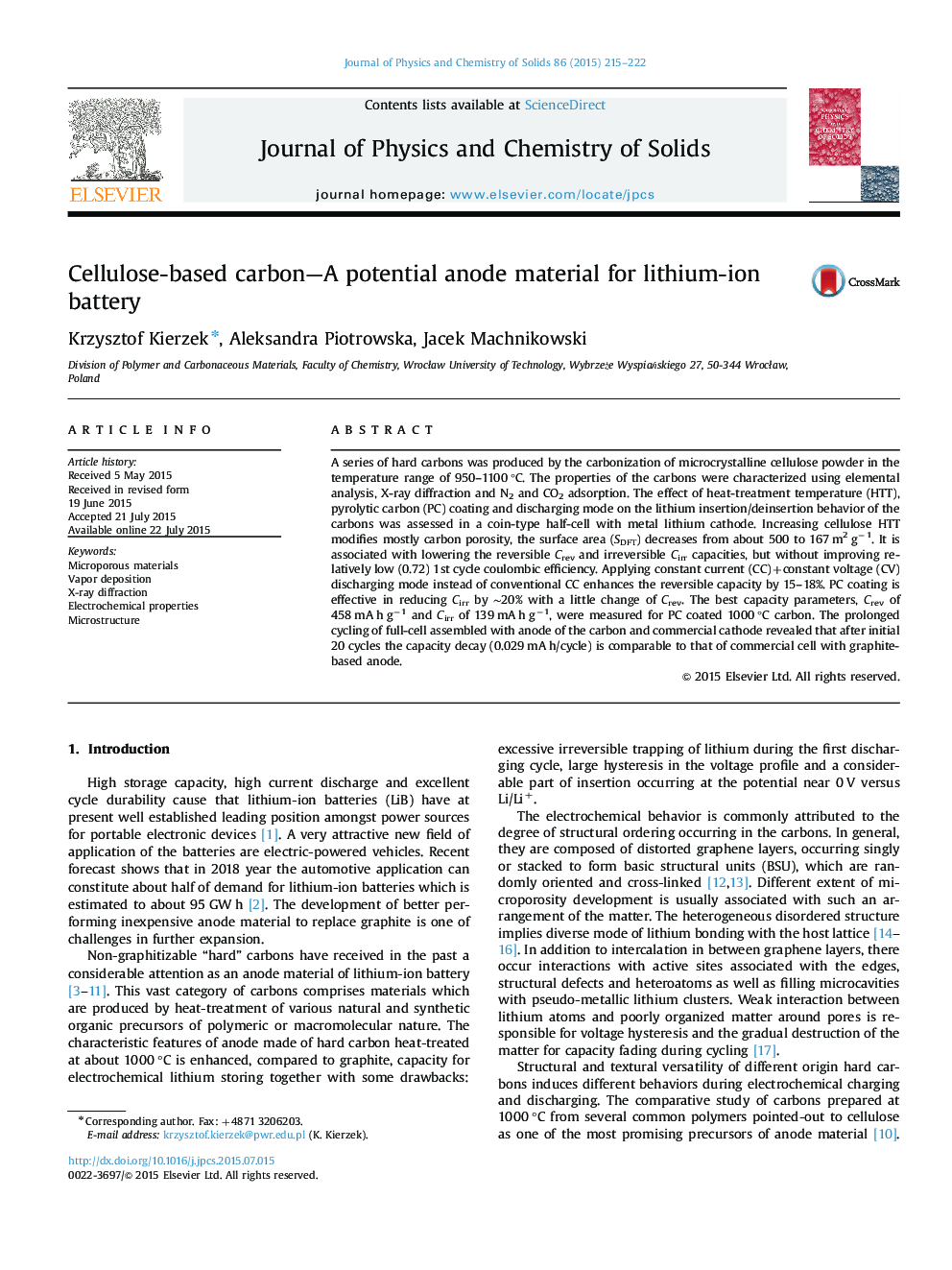| Article ID | Journal | Published Year | Pages | File Type |
|---|---|---|---|---|
| 7920873 | Journal of Physics and Chemistry of Solids | 2015 | 8 Pages |
Abstract
A series of hard carbons was produced by the carbonization of microcrystalline cellulose powder in the temperature range of 950-1100 °C. The properties of the carbons were characterized using elemental analysis, X-ray diffraction and N2 and CO2 adsorption. The effect of heat-treatment temperature (HTT), pyrolytic carbon (PC) coating and discharging mode on the lithium insertion/deinsertion behavior of the carbons was assessed in a coin-type half-cell with metal lithium cathode. Increasing cellulose HTT modifies mostly carbon porosity, the surface area (SDFT) decreases from about 500 to 167 m2 gâ1. It is associated with lowering the reversible Crev and irreversible Cirr capacities, but without improving relatively low (0.72) 1st cycle coulombic efficiency. Applying constant current (CC)+constant voltage (CV) discharging mode instead of conventional CC enhances the reversible capacity by 15-18%. PC coating is effective in reducing Cirr by â¼20% with a little change of Crev. The best capacity parameters, Crev of 458 mA h gâ1 and Cirr of 139 mA h gâ1, were measured for PC coated 1000 °C carbon. The prolonged cycling of full-cell assembled with anode of the carbon and commercial cathode revealed that after initial 20 cycles the capacity decay (0.029 mA h/cycle) is comparable to that of commercial cell with graphite-based anode.
Keywords
Related Topics
Physical Sciences and Engineering
Materials Science
Electronic, Optical and Magnetic Materials
Authors
Krzysztof Kierzek, Aleksandra Piotrowska, Jacek Machnikowski,
